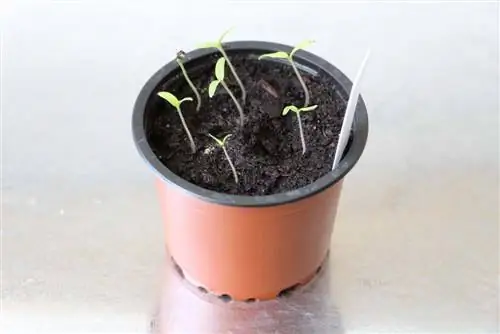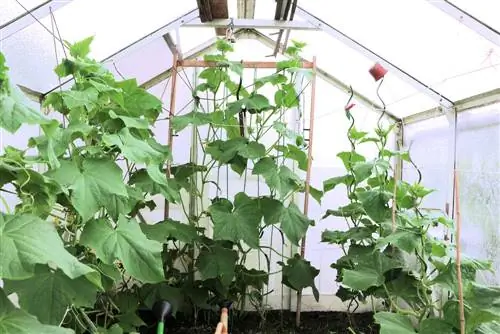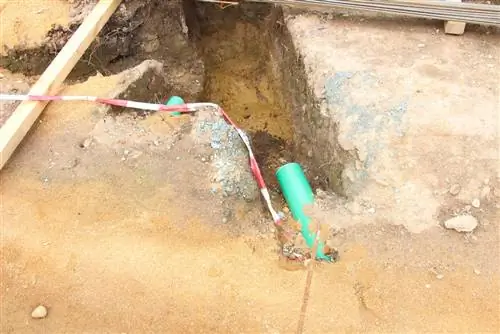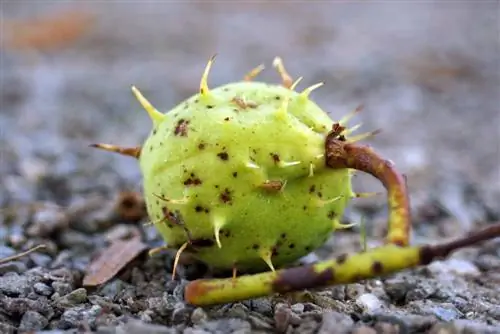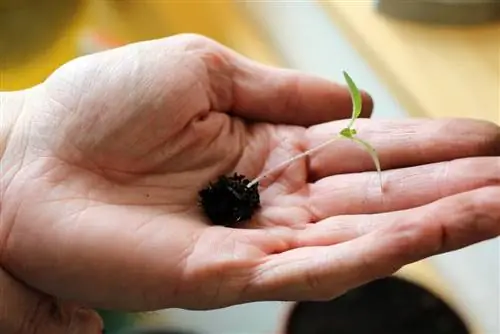- Author admin [email protected].
- Public 2023-12-17 03:39.
- Last modified 2025-01-24 12:45.
There are many techniques for sowing new plants that speed up or simplify this process. The pre-culture is one of the best-known variants. The opposite is the direct sowing of seeds in spring. During pre-culture, the seeds are usually placed in a culture dish to achieve pre-germination.
How is the pre-culture handled?
During pre-culture, the seeds are not just left in the culture until they show the first germs. As a rule, plants are pre-cultivated until young plants are obtained. These are then planted out in the spring in the place for which they are intended.
The advantage of a pre-culture is that you get fully grown plants more quickly. This is particularly suitable for bushes and ornamental plants. However, carrying out pre-culture has the disadvantage that the supply of seeds, seedlings and young plants must be guaranteed throughout the winter. During pre-cultivation it is necessary to repot the plants several times into larger or deeper containers. The advantage is that some plants start flowering earlier.
Not every plant is suitable for pre-culture. Frost germinators, for example, cannot be pre-cultivated because they need frost in the ground to develop seedlings. However, pre-culture is a good way to enable germination to form, especially for flowering plants that require warmth. Pre-germination in special pots also has the advantage that the plants cannot later be eaten by animals or plant pests. With the pre-culture you can ensure the growth of as many plant shoots as possible.
What should you pay attention to when pre-culture?
The time in which you begin pre-culture is important. The right date is often crucial for the success of sowing. If there is too little light or the temperatures are too low, then nothing will happen.
- The earliest sensible sowing date is the beginning of March.
- Choose the brightest place near the window for the cultivation containers.
- Direct bright sun is not recommended for the young plants.
- If the plants are too dark, they will rot.
- It's good to rotate the containers every now and then so that the plants don't just lean towards the light in one direction!
- Vessels suitable for pre-culture are: seed trays, mini greenhouses, flower pots made of plastic, growing pots made of organic material, swelling tablets, peat soaking pots and similar.
- Don't put too many seeds in one container!
- Very small seeds are best mixed with fine sand. This makes them easier to distribute.
- Special sowing soil is suitable for sowing. It is finer and lower in nutrients than normal potting soil.
- Make sure whether it is a light or dark germinator!
- Do not cover light germinators or only with a very thin layer of soil.
- Plant dark germs deeply, preferably 4 to 5 cm deep!
- It's best to use a spray bottle to moisten!
- It is often helpful to put a bag over the seed container to create higher humidity. Don't forget to ventilate, otherwise mold may form.
- Keep vessels warm, but not hot!
Care for seedlings
- When the plants are of a certain size, they are separated (pricked out). This prevents them from harassing each other.
- Do not prick out until two pairs of leaves have formed!
- You have to be very careful. The young plants are tender and very sensitive.
- Each plant gets its own pot.
- If it is warm enough at night, the young plants can be placed outside. It is important to get them used to the sun slowly. So, first put it in the shade!
Conclusion of the editors
Anyone who buys seeds commercially usually receives instructions on how to proceed with pre-cultivation and sowing. The important thing is to stick to it! Then nothing can go wrong. In most cases, the early flowers bloom sooner than if they were sown outside. In addition, the seedlings and young plants are protected from voracious snails and other predators.

